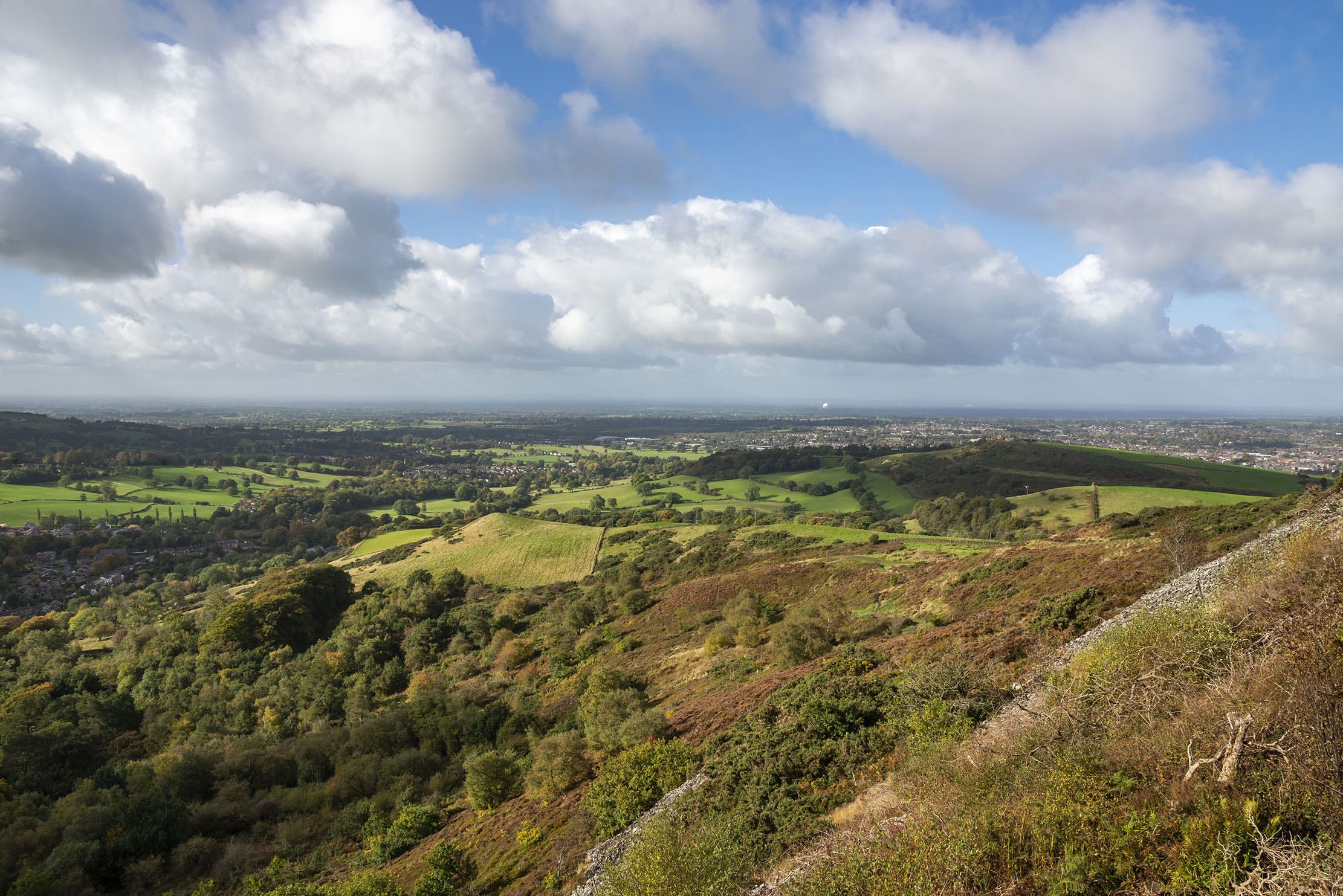A walk across the Cheshire Plain, the 200-million-year-old landscape where yesterday’s old industrial sites are today’s nature reserves
Fiona Reynolds heads out for a walk on the Cheshire Plain, where industry and farming are juxtaposed to startling effect.


The Cheshire Plain has always, to me, evoked dairy farming. Its huge, flat landscape is neatly enclosed by hedgerows and interspersed with tall, handsome red-brick farmhouses, a sign of a prosperous farming past. It’s still like that, although dairying has been more precarious in recent years. Those huge farmhouses — and every few miles an elegant hall — still dominate the landscape, but today I’m learning about something else: the farming of brine.
More than 200 million years ago, the Cheshire Plain (or, more properly, geologically, the Cheshire Basin) was deep under the sea, where vast quantities of salt were laid down. When the seas retreated, the salt beds formed an invaluable resource and, from Roman times on, towns such as Nantwich, Middlewich and Northwich owed their prosperity (and their names) to salt.
In the 19th century, chlorine, manufactured from salt, was the foundation of Britain’s chemical industry. Salt can be mined or surface-extracted and some of Cheshire’s famous meres were formed from collapsed salt beds. There’s also a long history of brine extraction from beneath the ground and this is what I’m about to see.
We’re staying in Plumley, east Cheshire, and my morning walk is a revelation. It’s been planned on a map, but the reality on the ground is very different. This is a place where you can walk from one mood to another in minutes, be lost in dense woodland or a maze of brine pipes, admire a splendid Georgian house in one glance and see an industrial landscape in the other.

From Plumley, I walk to Holford Hall, the surviving part of a lovely half-timbered, moated hall built for Lady Mary Cholmondeley in 1601. After glimpsing it from the footpath, I walk west around the edge of Plumley Lime Beds nature reserve, an old industrial waste tip whose calcareous soil encourages an abundance of orchids. Obeying the signs telling me not to trespass, I resist the temptation to explore it, instead carefully crossing the railway line to pass from an old into a current industrial landscape.
I’m suddenly in a network of surfaced roads, by a vast lorry park (although whether they’re dead or sleeping I can’t work out) and it’s a huge contrast to the rural scene I’ve just left. I walk on past Hame Farm and Langford Farm, both with attractive red-brick farmhouses, then turn east to what on the map looks like a small, unnamed settlement.
It turns out to be INEOS’s Holford Brinefield office, plumb in the middle of a vast brine farm, the cavities of which, when empty, are now, I gather, used to store gas. The unfamiliar sight of small enclosures containing sheds and large pipes labelled ‘crude brine’ appear at intervals around me as I walk towards the office buildings. Then, as suddenly as it was there, it’s gone and I’m back in deep rural countryside, on a welcoming footpath taking me through frost-glinting fields towards Holford Moss.
Exquisite houses, the beauty of Nature, and how to get the most from your life, straight to your inbox.
The early-morning sun is beautifully filtered through the trees and my labrador Ruskin bounds happily amid the frozen bracken as I walk through the Moss. These mosses (another of Cheshire’s distinctive habitats) were formed during the last glaciation and their peat deposits were as valuable as salt.

Since peat extraction stopped, the trees have grown up — although most are less than a century old, the atmosphere is spectacular. I’m sad to leave it behind and, as I emerge from Holford Moss and make my way back through narrow lanes to Plumley, I’m at first a bit disconcerted by what I’ve seen, then increasingly curious and intrigued.
There’s a lesson here. In this frankly mixed landscape, today’s nature reserves are yesterday’s old industrial sites. We need industry, but we also need to be good ancestors and ensure that tomorrow’s generation inherits beauty and Nature, too.
Fiona Reynolds is the author of ‘The Fight for Beauty’ and chair of governors at the Royal Agricultural University

Country houses for sale in Cheshire
Cheshire is a county filled with immaculate, well-preserved country houses for sale

The 'majestic' swathes of Cheshire and Yorkshire in line to become England's newest AONBs
England looks set to have two new Areas of Outstanding Natural Beauty, in Cheshire and Yorkshire. Carla Passino reports.
Fiona Reynolds is chair of the Food, Farming and Countryside Commission, the former director-general of the National Trust, former Master of Emmanuel College, Cambridge, and the author of The Fight for Beauty. Follow her on Twitter @fionacreynolds.
